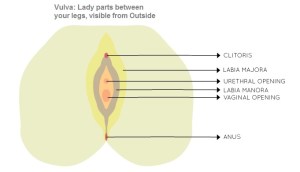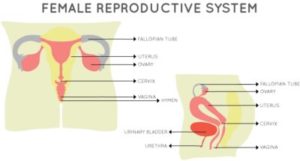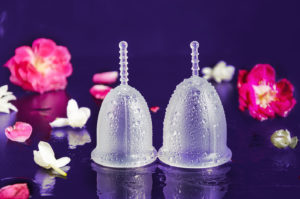Are your worried about menstrual cup safety? We wanted some clarity too and went for a conversation with well known gynecologist, Dr. Ratnaprabha Rajguru, BAMS CGO to share with you a gynecologist opinion on menstrual cups
Q&A with Dr Ratnaprabha Rajguru
Q. How did you come to know of menstrual cups and what made you switch to them from sanitary napkins/tampons?
I have known about menstrual cups for a couple of years but wasn’t sure from where to buy them, as the market isn’t really evolved in India. I was convinced about switching but the only issue was in the selection of the right cup with quality material. I got in touch with Saumya Dahake after reading her post on PuLa Facebook group and made the switch in Dec 2016.
Q. How should one go about the selection of the right cup? If you could also explain a bit about the female reproductive system. Since the cup goes inside the body, many women find its insertion intimidating and are afraid that they will lose it inside.
Selection of the right cup depends on several factors. The material has to be of very high quality, as it remains in touch with the vaginal walls.
The external organ in the female reproductive system is the vulva, which can be seen in a hand mirror.
There are 2 orifices (opening) in the vulva – a. to the urethra for passage of urine and b. to the vagina from where menstrual fluid flows, for sexual intercourse and childbirth in case of natural delivery.
The cup is inserted in the 2nd orifice or vagina. The vagina is a canal that leads to the cervix and this is where the cup sits. It is not possible to lose a cup inside.
Q. Is it true that the cervix moves throughout the month and during periods it is lower?
Cervix is a cylindrical, elongated lowermost part of the uterus, about 2-3 cm long. It does move, though not very drastically. The outer surface of the cervix feels like a button to touch. Cervix may be anteverted (tilted forward) or retroverted (tilted backward).
When we say cervix shifts during the month or cycle, we are necessarily talking about changes in the position of the uterus. This may be due to pregnancies, body structure, or menses. Cervix also undergoes changes during labor.
During menses, the cervix is slightly lower and open for the passage of menstrual blood. The key in switching to a menstrual cup is – Do not assume. Measure your cervix. This will help you make the right choice of menstrual cup.
Q. Many women are also concerned about the expansion of the vagina with the use of a menstrual cup. Please share gynecologist opinion on menstrual cups usage and effect on the vaginal canal.
Vagina is very elastic and capable of dilation. The diameter of a baby’s head can be 15 cm and it comes out of the vagina in case of a natural delivery. After that, the vagina regains its original size. With regular physical exercise, muscles get toned and that includes the vagina too. Kegel exercise for the vagina is a good option.
The maximum diameter of a menstrual cup is about 5 cm and I am taking a lot of liberty when I say this. It is a myth that the vagina expands with regular use of menstrual cup.
Q. Hymen is another topic of concern, especially when it comes to adolescent girls. What is hymen and what role does it play in a woman’s anatomy?
Hymen is a membrane or layer of tissue that covers the vaginal opening. With any vigorous physical activity like cycling, running, swimming it can get stretched or broken. It’s a myth that it breaks at the first sexual intercourse. But that has been the conventional thinking and we have seen marriages and homes getting broken because of it.
This is the reason why hymenoplasty or hymen reconstruction is one of the most sought-after procedures nowadays.
Personally, I do not recommend menstrual cups for adolescent girls, certainly not at the menarche (onset of menstruation). Once they achieve a certain level of menstrual maturity, they can start using the cup.
It is not because of menstrual cup safety concerns but due to the fact that at this age the body is still growing and any internal product can hamper that growth.
I would recommend cloth pads to such young girls. If washed and dried properly, it’s a much better option over sanitary napkins and certainly, over tampons. I do not advocate tampons at all, they are worse than sanitary napkins for the human body.
Q. What message/advice would you like to give to those women who are contemplating a switch from sanitary napkins and tampons to menstrual cups and are concerned about menstrual cup safety.
For anyone who is thinking if a menstrual cup is safe or not, should not be worried. If you choose a cup from a trusted brand, then they use materials that are totally safe for internal use. I would advice to just go for it! It is a hygienic method provided you take good care of your cup and keep it clean.
Besides being eco-friendly, it also saves you the recurring expenses on sanitary napkins. A woman is emotionally and physically vulnerable during menses owing to hormonal changes. One psychological advantage of a menstrual cup is that it gives you a sense of confidence in this phase.








